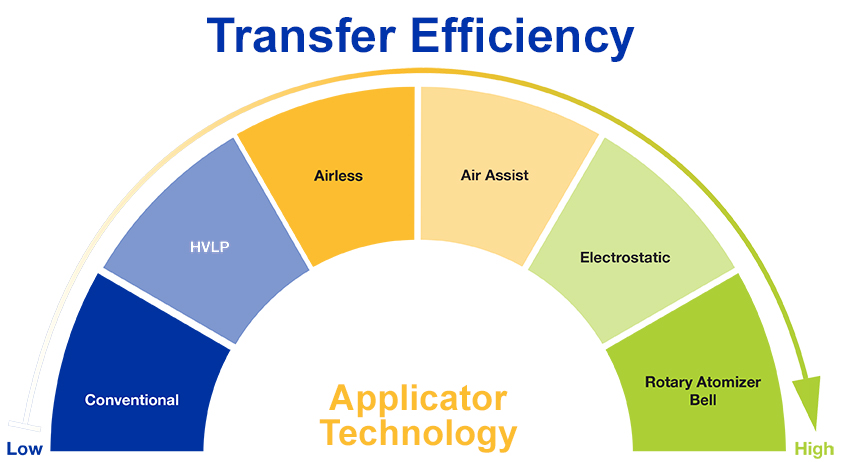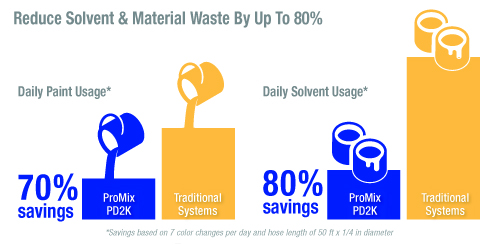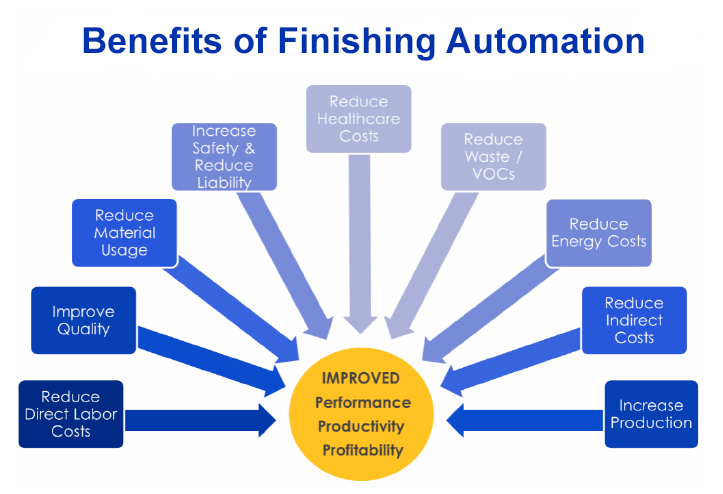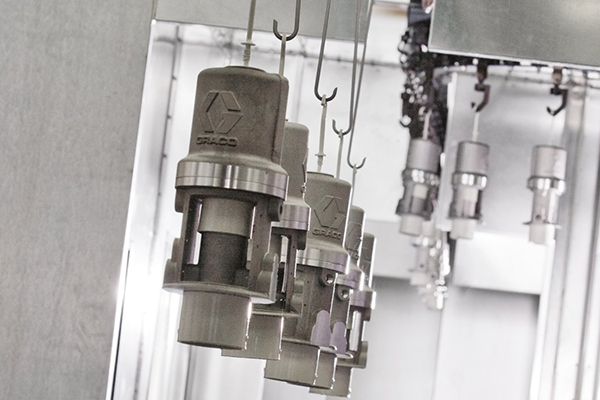3 Steps to Lower Paint Line VOCs
To minimize VOCs, manufacturing companies are looking for ways to reduce paint and solvent waste with more efficient equipment and automated processes.
Volatile organic compounds (VOCs) are the carbon-based solvents that give traditional paints their obnoxious odor. According to the United States Environmental Protection Agency (EPA), some VOCs are suspected carcinogens. VOCs in traditional paints account for 2 to 4 percent of existing ozone-depleting substances in the U.S.
Why Reduce VOCs in Paint?
VOCs in paint can cause serious health effects, including skin and eye irritation, kidney damage, cancer, reproductive disruption, respiratory issues and impaired cognitive functions. Because of their health and environmental effects, VOCs have been, and continue to be, regulated.
To reduce ozone levels, the U.S. EPA and numerous state agencies have issued regulations to reduce VOC emissions from a variety of sources, including industrial painting. The regulations can be confusing and vary from state to state. With the ever-changing limitations, many manufactures are trying to find ways to reduce their carbon footprint and save on VOC disposal fees.
3 Steps to VOC Reduction
Most manufacturers can lower VOC emissions from their paint lines in three steps.
1. Reduce the Amount of Paint Sprayed at a Target
The term "transfer efficiency" refers to the amount of paint that is deposited on the part compared to how much sprays past the part and is wasted. By increasing transfer efficiency we reduce the amount of paint sprayed.
Spraying less paint leads to a reduction in released VOCs. It also improves the life of your booth filters.
Transfer efficiency increases as a result of using different spray technologies. By maximizing transfer efficiency and spraying less paint, manufactures not only save money, but it also means less maintenance, clean-up, lower filter costs and VOC emissions.

2. Control the amount of solvent used
Solvent can be reduced with accurate mixing and ratio assurance. This ensures materials are mixed on-demand at the correct ratio for optimal performance. Precision flow control provides a consistently smooth fluid delivery.
A plural component proportioner with the mixing point closer to the gun can reduce flushing waste by up to 80 percent and speed up color changes. This design feature ensures that the material is mixed precisely before it is sprayed. For manufactures, this means lower VOCs expenses and less wasted paint.

3. Consider Automating Your Paint Line
Paint booths are hazardous environments. Employees who spend their days in the booth are exposing themselves to toxic fumes and explosive chemicals.
Automation can reduce material consumption by up to 30 percent. Thanks to the accuracy of robots, you have more control and access to how much material is used, which is going to reduce your material costs significantly.
To reduce waste even more, manufacturing managers should look at the type of equipment used with their robot. WIth plural component proportioners that mix material close to the gun and automatic electrostatic guns that increase transfer efficiency, you can save material and money on VOC disposal fees. Using spray equipment that easily integrates with robot technologies ensure that the spray parameters and spraying motion is exactly the same each time, which increases quality.
Manufacturers of all sizes are benefiting from the many advantages of automation. Automation can definitely save manufacturers money far exceeding the implementation costs. The savings are everywhere from quality and increased production to reducing waste and overhead costs. If you have ever considered automation in your plant, now is the time to say yes.

Automation ROI Tool
Automation saves money and improves efficiency. What's your return on investment?
Free Webinar
The Quest for Paint Line Automation
This 38-minute webinar equips you with ways make the case for automation and real-life examples of how manufacturers automate some of all of their paint lines.
Related Articles
Take the Paint Efficiency Audit
Take the paint efficiency audit and assess your current equipment and processes.
Electrostatic Spray Gun Basics
How do electrostatic paint spray guns work? It’s basic science.
Tips for Improving Transfer Efficiency
Transfer efficiency often depends on the spray applicator. Learn how to select the most efficient paint spray gun for your manufacturing application.






